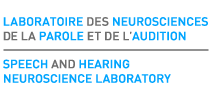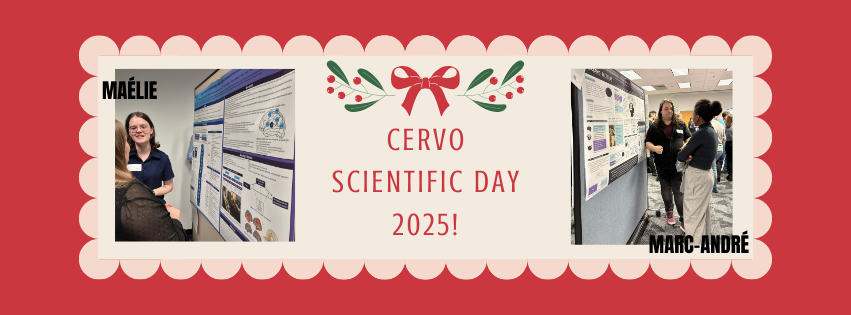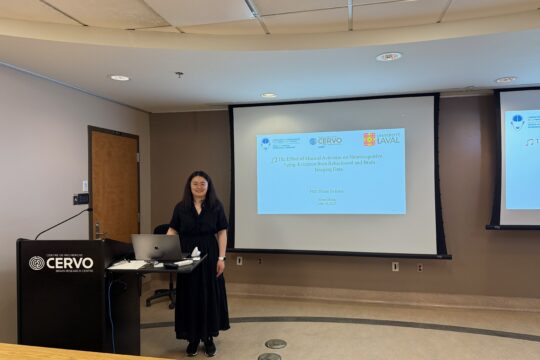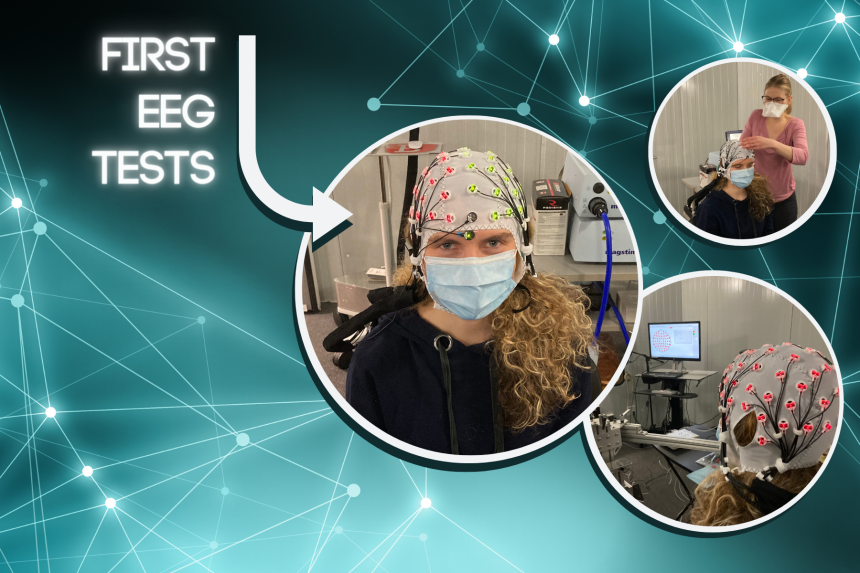
Learning to use new equipment is always exciting! These days, several members of the team—Pascale, Marilyne, Alexandre, Sabrina and Camille—much like kids who have just received a new toy, are learning to use our new electroencephalography (EEG) system.
In the image above, we can see Camille who volunteered to wear the EEG cap.
The first steps with the new system involve a host of tasks! After receiving theoretical and practical training from the supplier of the EEG system and ensuring that the new equipment was functional, we had to reorganize the lab. The EEG data collection will take place in our soundproof room, where the transcranial magnetic stimulation (TMS) and behavioral tests (language, speech, hearing and cognition) take place. There is therefore a variety of equipment in the room and the space had to be optimized. So, we spent several hours reorganizing the space and labeling our new material (much to Pascale’s delight!). Having the EEG and the TMS systems in the same room will allow us to combine these two techniques. In fact, this is what we will do in a research project that should begin this spring. This project will aim to better understand the magnitude, nature and duration of the effects of non-invasive stimulation on brain activity, when brain regions that play a role in speech perception are targeted.
But before starting this project, we still have some work to do. This week we are developing protocols for the use and maintenance of the EEG system. These protocols allow members of the lab who are not familiar with EEG to learn how to use the equipment appropriately. The protocols also help to avoid omissions or errors during data collection, and, importantly, protocols ensure consistency across the team members (that is, each step must be performed in exactly the same way by everyone), which is the only way to collect valid data. A protocol for equipment maintenance will also maximize the equipment lifespan. For example, after each EEG session, the cap and the electrodes must be cleaned carefully and in a very specific manner to avoid damage.
In addition to developing protocols, we are also working on linking the EEG system to the other systems we use. For example, as part of the experiment we are preparing, participants will hear sounds and will have to determine whether they are the same or different by pressing a button. The electrical activity of the brain will be recorded during the task using the EEG system. This experiment requires a computer to run the experimental task and another computer to record the EEG data. We also need special insert earphones (that fit inside the ears) which do not interfere with EEG data collection like headphones would. A response box must also be used to record the participant’s responses. These different devices must all be connected and work in a coordinated way. This allows us, for example, to indicate in real time on the EEG signal exactly when the sounds were sent through the earphones or when the participant pressed a button, which is essential to analyze the EEG signal. Organizing these systems requires programming and connecting all kinds of devices.
Over the next few weeks, the lab members will also have to practice setting up the EEG cap and applying the conductive gel using a syringe. The application of gel is necessary to reduce the impedance (see box below) of each electrode and thus be able to properly capture the electrical activity generated by the neurons.
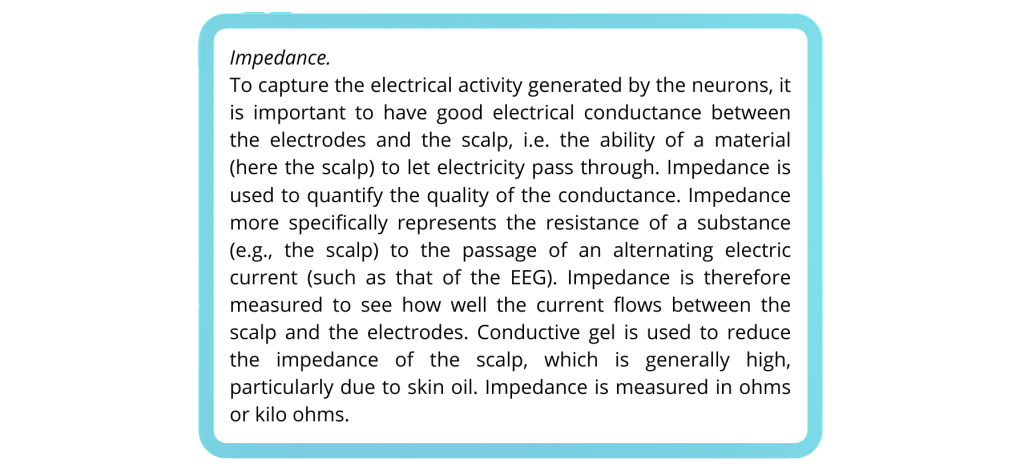
In the image where Camille is wearing the EEG cap, did you notice the green and red lights on the top of the cap? They are red when no gel has been applied and the impedance is high. Once the gel has been applied and the impedance has decreased, they turn green. This is when EEG data collection can begin! It takes a bit of practice to apply the right amount of gel and keep the EEG cap setup time to a minimum. When the preparation time is short, more time can be spent carrying out the experimental tests with a participant. It is also more pleasant for the participants!
Once we have performed several EEG tests and familiarized ourselves with the system, we will begin data collection. In a few months, we will start combining TMS and EEG, which is the objective of this project, which is at the heart of the lab’s director, Pascale, NSERC funded research program on brain plasticity! More news will follow in the coming months as the project unfolds!
